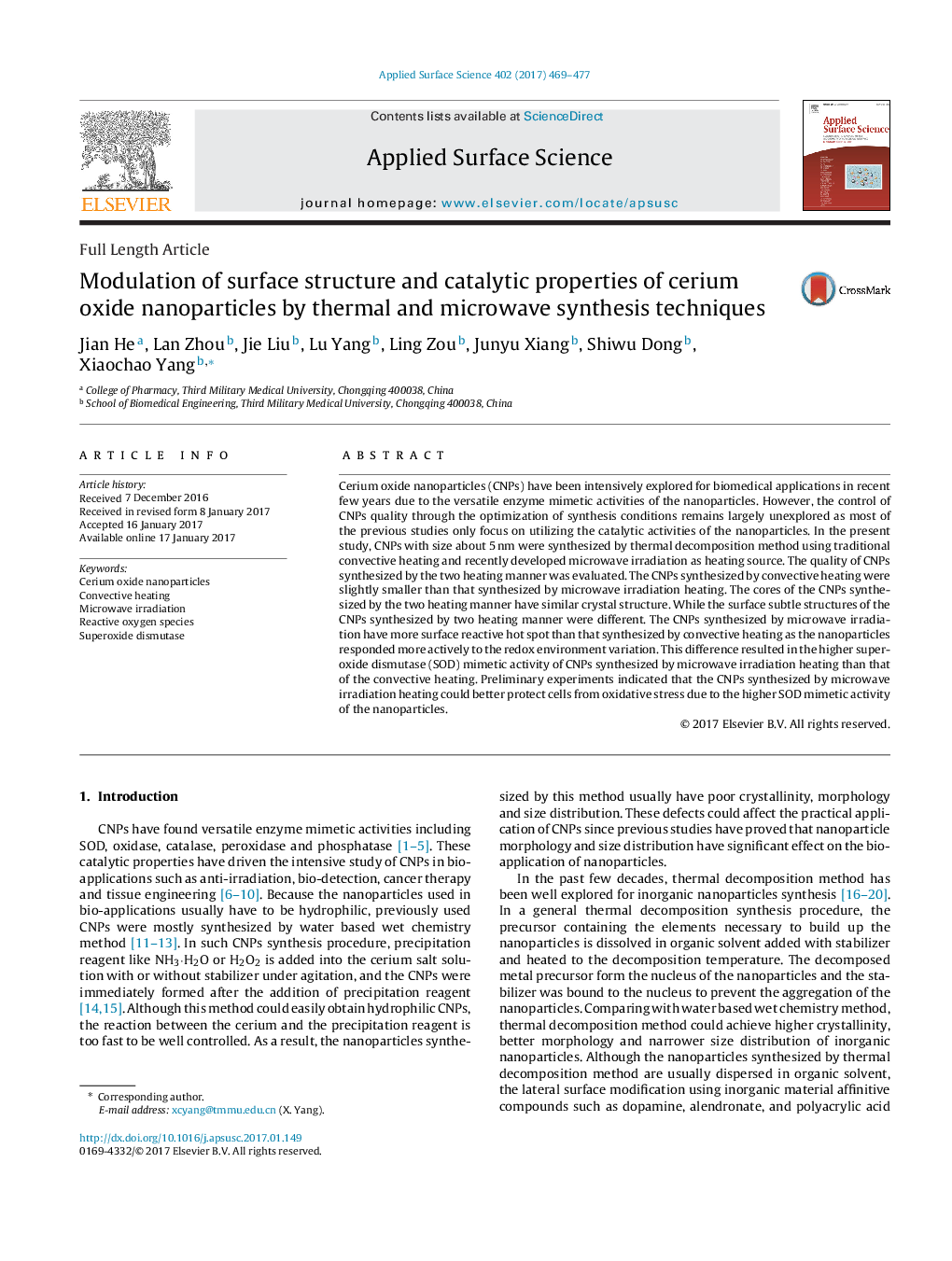| Article ID | Journal | Published Year | Pages | File Type |
|---|---|---|---|---|
| 5352293 | Applied Surface Science | 2017 | 9 Pages |
Abstract
Cerium oxide nanoparticles (CNPs) have been intensively explored for biomedical applications in recent few years due to the versatile enzyme mimetic activities of the nanoparticles. However, the control of CNPs quality through the optimization of synthesis conditions remains largely unexplored as most of the previous studies only focus on utilizing the catalytic activities of the nanoparticles. In the present study, CNPs with size about 5Â nm were synthesized by thermal decomposition method using traditional convective heating and recently developed microwave irradiation as heating source. The quality of CNPs synthesized by the two heating manner was evaluated. The CNPs synthesized by convective heating were slightly smaller than that synthesized by microwave irradiation heating. The cores of the CNPs synthesized by the two heating manner have similar crystal structure. While the surface subtle structures of the CNPs synthesized by two heating manner were different. The CNPs synthesized by microwave irradiation have more surface reactive hot spot than that synthesized by convective heating as the nanoparticles responded more actively to the redox environment variation. This difference resulted in the higher superoxide dismutase (SOD) mimetic activity of CNPs synthesized by microwave irradiation heating than that of the convective heating. Preliminary experiments indicated that the CNPs synthesized by microwave irradiation heating could better protect cells from oxidative stress due to the higher SOD mimetic activity of the nanoparticles.
Keywords
Related Topics
Physical Sciences and Engineering
Chemistry
Physical and Theoretical Chemistry
Authors
Jian He, Lan Zhou, Jie Liu, Lu Yang, Ling Zou, Junyu Xiang, Shiwu Dong, Xiaochao Yang,
